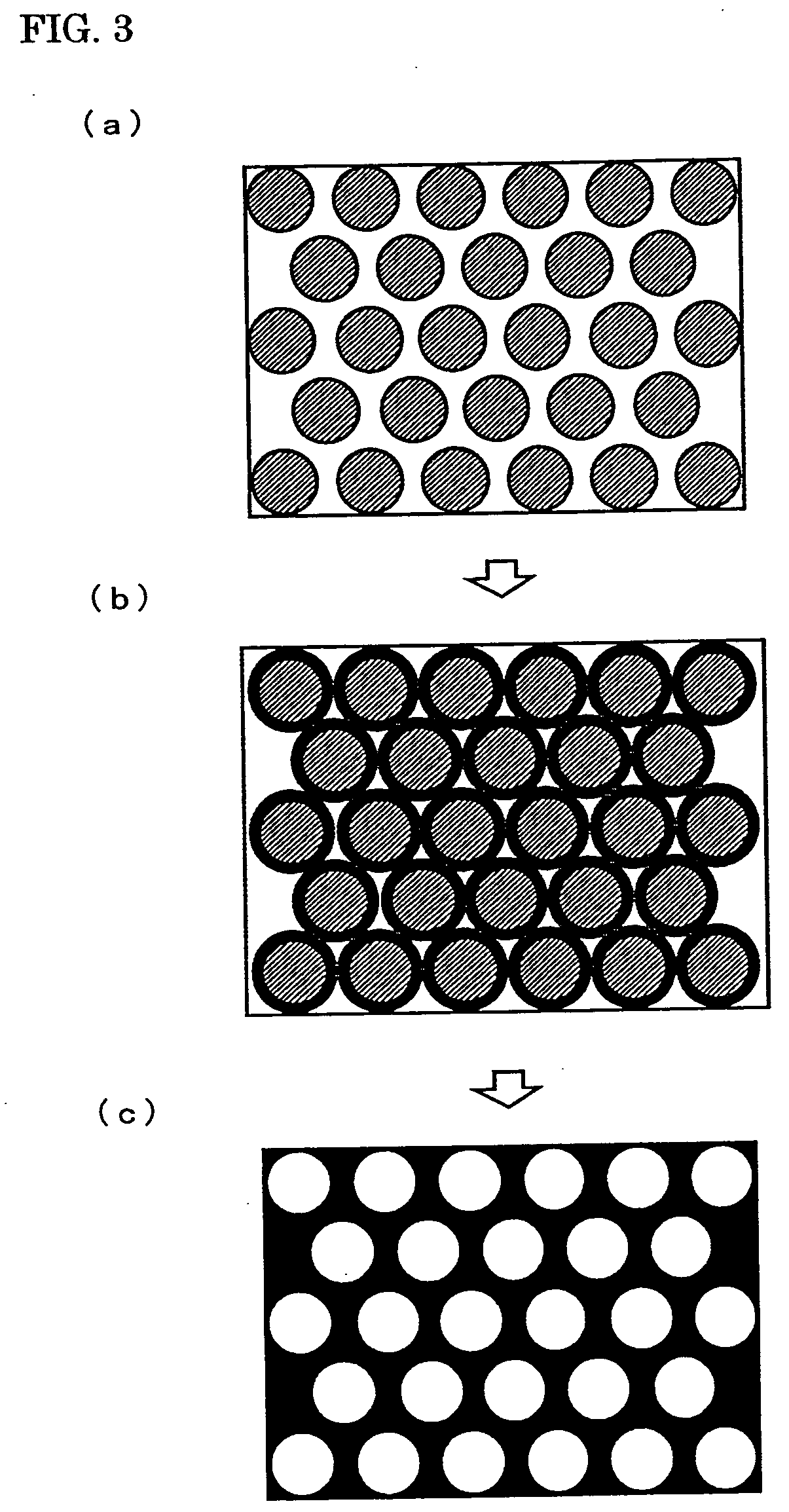Porous silicon nitride ceramics and method for producing the same
a technology ceramics, which is applied in the field of porous silicon nitride ceramics and the field of production of the same, can solve the problems of difficult to obtain, uneven characteristics, and weak strength, and achieve excellent electrical/mechanical characteristics and reduce the effect of dielectric loss
- Summary
- Abstract
- Description
- Claims
- Application Information
AI Technical Summary
Benefits of technology
Problems solved by technology
Method used
Image
Examples
example 2
[0043] Si powder having the average particle diameter of 1 .mu.m and, as sintering additives in the amount of 0.8 mol % with respect to the Si powder, rare-earth oxides as listed in Table II each having the average particle diameter of 0.8 .mu.m were prepared. Each powder is commercially available. The Si-powder, whose oxygen content at the surface was pre-confirmed to be 0.7 mol % in terms of SiO.sub.2, by measuring according to an inert-gas fusion and infrared detection method, was prepared. Each powder thus prepared was subjected to mixing, molding, and thermal treatment in the same way as in Example 1.
[0044] Thereafter, the atmosphere was changed to a nitrogen atmosphere of the atmospheric pressure. The temperature was then raised to 1000.degree. C., and held for three hours, and then raised to 1200.degree. C., and held for three hours. After natural cooling, finish machining was performed in the same way as in Example 1. The whole porosity, closed porosity, permittivity, and di...
example 3
[0047] Si powder having the average particle diameter of 1 .mu.m and, as sintering additives at the ratios shown in Table III with respect to the Si powder, Yb.sub.2O.sub.3 each having the average particle diameter of 0.8 .mu.m were prepared. Each powder is commercially available. The Si-powder, whose oxygen content at the surface was pre-confirmed to be 0.7 mol % in terms of SiO.sub.2 by measuring in the same manner as in Example 1, was prepared. Mixing, molding, sintering, and finishing were performed in the same manner as in Example 2. The whole porosity, closed-pore percentage, and dielectric loss of the obtained sintered bodies were measured in the same manner as in Example 1, and the results are shown in Table III.
3TABLE III Amount of addition Whole porosity Closed-pore No. (mol %) (%) percentage (%) tan .delta. (.times.10.sup.-5) 15* 0.16 65 30 100 16 0.78 67 98 9 17 2.5 50 85 20 18* 6 42 45 220 *comparative example
[0048] From Table III, it is understood that, if the amount o...
example 4
[0049] Si powders whose average particle diameter was 0.8 to 10 .mu.m and, as a sintering additive, Sm.sub.2O.sub.3 having average particle diameter of 0.8 .mu.m in the amount of 0.8 mol % with respect to the Si powder, were prepared. The oxygen content of each Si-powder at the surface was measured according to the method recited in Example 1, and the results (in terms of SiO.sub.2) are shown in Table IV. Each powder is commercially available. Mixing, molding, sintering, and finishing were performed in the same manner as in Example 2 with these powders. In the sample of No. 22, an oxidation inhibitor was not added while ball-mill mixing was being performed. The whole porosity and closed-pore percentage of each sintered body were measured in the same manner as in Example 1, and the results are shown in Table IV. Grain boundary phases identified by X-ray diffraction are also shown in Table IV.
4TABLE IV Surface Particle oxygen Whole Closed-pore Grain diameter content porosity percentag...
PUM
| Property | Measurement | Unit |
|---|---|---|
| porosity | aaaaa | aaaaa |
| pore diameter | aaaaa | aaaaa |
| dielectric constant | aaaaa | aaaaa |
Abstract
Description
Claims
Application Information
 Login to View More
Login to View More - R&D
- Intellectual Property
- Life Sciences
- Materials
- Tech Scout
- Unparalleled Data Quality
- Higher Quality Content
- 60% Fewer Hallucinations
Browse by: Latest US Patents, China's latest patents, Technical Efficacy Thesaurus, Application Domain, Technology Topic, Popular Technical Reports.
© 2025 PatSnap. All rights reserved.Legal|Privacy policy|Modern Slavery Act Transparency Statement|Sitemap|About US| Contact US: help@patsnap.com



